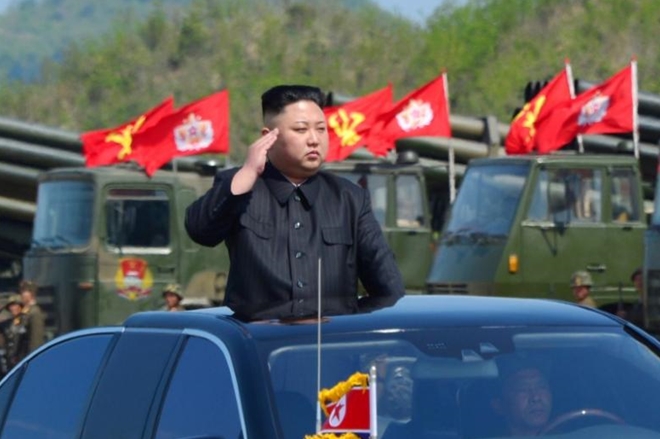North Korea test-fires ballistic missile in defiance of world pressure
- Trump says 'major, major' conflict with North Korea possible, but seeks diplomacy
- U.S. says strategy on North Korea centers on sanctions, open to talks
- U.S. moves THAAD to South Korean site as North Korea boasts fire power
- Pence lands at Korean DMZ day after North Korea's failed missile test
U.S. and South Korean officials said the test, from an area north of the North Korean capital, Pyongyang, appeared to have failed, in what would be North Korea's fourth successive unsuccessful missile test since March.
The test came as the USS Carl Vinson aircraft carrier group arrived in waters near the Korean peninsula, where it will join the USS Michigan, a guided missile submarine that docked in South Korea on Tuesday.
Tillerson, in a U.N. Security Council meeting on North Korea, repeated the Trump administration's position that all options were on the table if Pyongyang persisted with its nuclear and missile development.
 |
| North Korea's leader Kim Jong Un watches a military drill marking the 85th anniversary of the establishment of the Korean People's Army (KPA) in this handout photo by North Korea's Korean Central News Agency (KCNA) made available on April 26, 2017. KCNA/Handout via REUTERS |
"The threat of a nuclear attack on Seoul, or Tokyo, is real, and it's only a matter of time before North Korea develops the capability to strike the U.S. mainland," Tillerson said.
"Failing to act now on the most pressing security issue in the world may bring catastrophic consequences," he said.
U.S. President Donald Trump, who told Reuters in an interview on Thursday North Korea was his biggest global challenge, said the launch was an affront to China, the North's sole main ally.
"North Korea disrespected the wishes of China & its highly respected President when it launched, though unsuccessfully, a missile today. Bad!," Trump said in a post on Twitter after the launch.
Chinese Foreign Minister Wang Yi told the U.N. meeting on Friday it was not only up to China to solve the North Korean problem.
"The key to solving the nuclear issue on the peninsula does not lie in the hands of the Chinese side," Wang said.
Both China and Russia rebuked a U.S. threat of military force.
U.S. officials, speaking on condition of anonymity, said the North Koreans had probably tested a medium-range missile known as a KN-17 and it appeared to have broken up within minutes of taking off.
The South Korean military said the missile, fired from the Pukchang region in a northeasterly direction, reached an altitude of 71 km (44 miles) before disintegrating a few minutes into flight. It said the launch was a clear violation of U.N. resolutions and warned the North not to act rashly.
The North has been conducting missile and nuclear weapons related activities at an unprecedented rate since the beginning of the year and is believed to have made some progress in developing intermediate-range and submarine-launched missiles.
The United States has been hoping North Korea's sole major ally, China, can bring pressure to bear. But China says the United States must not over-estimate the influence it has over its neighbor.
There was no immediate reaction to the launch from China.
Trump, in his interview with Reuters, said he had praised Chinese leader Xi Jinping for "trying very hard" on North Korea, though Trump warned a "major, major conflict" between the United States and North Korea was possible.
Tension on the Korean peninsula has been high for weeks over fears the North may conduct a long-range missile test, or its sixth nuclear test, around the time of the April 15 anniversary of its state founder's birth, or the day marking the founding of its military.
With North Korea acting in defiance of the pressure, the United States could conduct new naval drills and deploy more ships and aircraft in the region, a U.S. official told Reuters.
Japan condemned the launch as unacceptable and authorities stopped some train services in Japan as a precaution, in case the missile had been fired at Japan, a transit system spokesman said.
A Japanese military official said its navy on Saturday completed an exercise with the Carl Vinson in the channel separating the Korean peninsula from Japan, meaning the U.S. carrier had arrived in the Sea of Japan.

